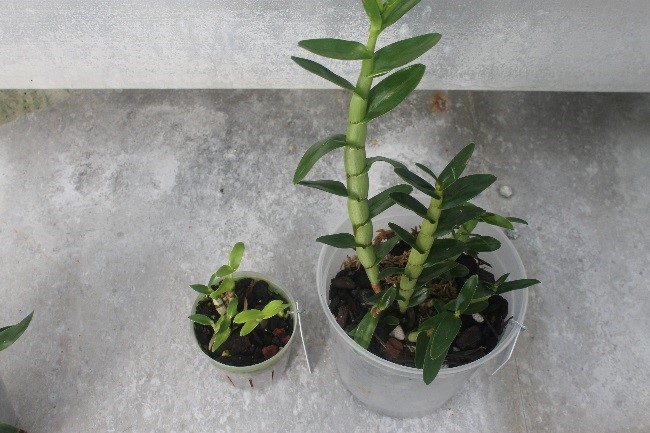The Critical Importance of Water Quality for Living Collections: Planning Ahead
Objects and artifacts in a museum collection are typically housed in cases and cabinets with drawers or shelves. As a living museum, Smithsonian Gardens’ plant collections are maintained in the landscape and in a large greenhouse facility. Because plants are living specimens that require vitamins, nutrients and other sources of energy, they must be monitored and nurtured daily. Water is a critical component of this care. Photosynthesis, transpiration (water movement through a plant and subsequent evaporation from plant leaves), and the transfer of vitamins and minerals from the soil to the plant are all dependent on the presence of water.
Water quality and availability are key factors to plant maintenance in a public garden. Things like droughts, floods, and other natural disturbances must be considered when developing a plan of care for each garden and/or collection. Throughout its gardens and landscapes, Smithsonian Gardens utilizes an irrigation system that uses 30-50% less water than conventional watering, improves plant growth by extending watering times, prevents soil erosion and nutrient runoff, and ensures that plants are watered without wetting leaves, which helps prevent fungal disease.
Water quality is also of critical importance when it comes to successful orchid cultivation and maintenance. Orchid species exposed to municipal water–such as that which the Smithsonian Gardens Orchid Collection (SGOC) currently uses–exhibit detrimental physical manifestations caused by the accumulation of salts in the growing medium. These adverse effects include leaf tip burn, decreased plant vigor, reduced blooming, discoloration, and even death.

To have access to high quality water for the long-term care of SGOC, Smithsonian Gardens recently secured funding from the Smithsonian’s Collections Care and Preservation Fund* to install a customized rainwater harvesting system at its Greenhouse Facility. The system will collect, filter and store rainwater in a large tank or modular chamber. This is a preferable alternative to filtering municipal water for several reasons. First, filtering does not remove all of the added compounds found in municipal water. Additionally, rainwater has a similar pH to that of reverse-osmosis (R/O) water, which is currently used for our most delicate specimens. Smithsonian staff are currently visiting local universities and public gardens with large-scale water harvesting systems to glean ‘lessons learned’ from each project and to determine whether an above-ground or underground cistern (water storage tank) makes the most sense for SGOC’s year-round water use.
The plan is for rainwater to be collected from the roof of the Smithsonian Gardens Greenhouse Facility then pumped under pressure from a cistern through a filtration system to remove particles at the micron level. From there, the rainwater will be disinfected using ultraviolet light to destroy any microorganisms that are detrimental to orchid health. Finally, the rainwater will be pumped to a hose connector in each of the four orchid greenhouses for use when staff are watering.
*This project supports innovative and sustainable collections care which will have a direct, substantial, and permanent impact on the health and preservation of the Smithsonian Gardens Orchid Collection. It was made possible with financial support from the Smithsonian Collections Care and Preservation Fund, administered by the Smithsonian’s National Collections Program and the Smithsonian Collections Advisory Committee.
